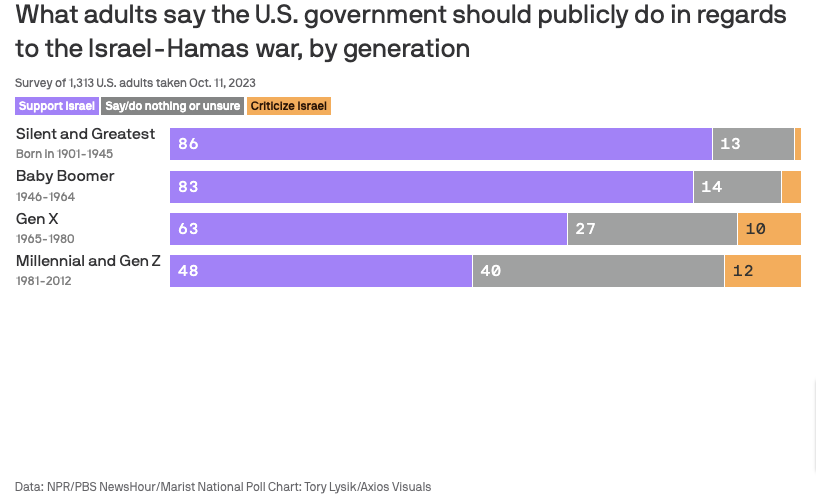This week…
Your reading time is about 9 minutes. Woah! Buckle up.
I will deviate slightly from my usual theme-based text for this part of the newsletter and write about Indigenous stories in the press this past week.
CBC News produced an extensive investigation into Buffy Sainte-Marie’s claims to Indigenous ancestry.1 This story quoted Indigenous scholar Kim TallBear as saying that Indigenous children were often better documented than non-Indigenous children because of the onerous rules imposed on them. “We have to be well-documented so the settler state can manage […] land allotments, so it could manage residential schools,” she said.
That portion of the story reminded me of the upcoming date to register for status in my home state, starting November 1, 2023, to maintain native rights for things such as land inheritance.2 Even though I have an accurate birth certificate, my mother thinks I should apply for confirmation so our ancestral land won’t go to the state for ‘development.’ (Fun fact: The governor’s Syria-born wife of Kurdish heritage has native status.3 🙃)
I’m not a fan of Martin Scorsese or Leonardo DiCaprio, so I’m not interested in watching Killers of the Flower Moon, which has courted mixed reactions from the Osage community.4 To put to context, Stephanie Holland wrote in The Root: “Black people are very familiar with Hollywood’s fascination with portraying the pain and trauma of marginalised communities. While it helps to have those stories acknowledged and told, it can feel like we’ve been reduced to our worst moment.”5 Reservation Dogs star Devery Jacobs, who is Mohawk, tweeted that the film was “painful, grueling [sic], unrelenting and unnecessarily graphic.”6 Critics question why Scorsese is the one telling this story, point out the tiresome white saviour trope, and, in general, prove why Indigenous people are not a monolith. Hooray, I guess.
Hey, remember when my home state-funded, in excess(!),7 a white saviour film that glorified the White Rajah? It was a flop, but it was no Scorsese either.
In its place, I recommend the film Café Daughter (dir. Shelley Niro), which I saw at the imagineNATIVE Film + Media Arts Festival over the weekend. The story follows a Cree and Chinese girl who hides her native ancestry to avoid discrimination in 1960s Saskatchewan as she works on her goal of becoming a doctor when girls can “only” be nurses. The film is an adaptation of Kenneth T. William’s stage play, which fictionalised the life of Canadian physician and senator Lilian Dyck.
Also featured at the festival was Ancestors’ Gate by Steve Diabo, an immersive and interactive piece collecting recordings of stories, songs, and other visuals from different Indigenous communities and presented through a combination of old-timey devices and contemporary technology, like an inter-generational portal.
With that, we can now get back on track, so here’s a selection of top stories on my radar, a few personal recommendations, and the chart of the week.
ICYMI: The Previous Block saw YouTube doing the opposite of what Meta, XTwitter, and TikTok are doing with the news, AI in the news, and the imperfect news coverage of the Israel-Hamas war. CORRECTION NOTICE: None notified. The New York Times offers a limited mea culpa for how it initially presented news of the Gaza hospital blast
Joshua Benton for Nieman Lab:
The New York Times says that it “should have taken more care with the initial presentation” of its coverage of the Gaza hospital explosion last week. That’s the takeaway from an editor’s note published to NYTimes.com this morning. The Times has faced criticism for initially giving credence to the Hamas claim that the blast was caused by an Israeli attack; Israeli officials later said a misfired Palestinian Islamic Jihad rocket was to blame. (There’s still a lot unknown about the explosion, but independent analysts have generally come down on the side of the misfired-rocket version.)
[…]
Notably absent in the 308-word note were any links to the Times coverage in question. (The Times has published 22 stories mentioning “al-Ahli,” the name of the hospital in question, since the blast.)
Parker Malloy, in The Present Age, reminds news organisations to “write your headlines, tweets, and push notifications as though they’re the only things most people will see — they often are.”
How the conspiracy-fueled Epoch Times went mainstream and made millions
Brandy Zadrozny for NBC News:
Its editorial vision — fueled by a right-wing slant and conspiracy theories — is on display in recent reports on how “Jan. 6 Capitol Hill Security Footage Challenges Key Narratives” and “Meteorologists, Scientists Explain Why There Is ‘No Climate Emergency.’” Its video series include a documentary-style film alleging widespread vaccine injury and death and an exposé of an alleged world government agenda to harm farmers, cull the population and force survivors to eat bugs.
What The Epoch Times lacks in standards, it makes up for in style and form, mirroring the aesthetics of journalism — a feature that’s attracted subscribers and big-name supporters.
Anti-vaccine activist and presidential candidate Robert F. Kennedy Jr. calls The Epoch Times a daily read, among his most trusted news sources.
Factual news is behind a paywall, while misinformation is freely available.
A global news nonprofit wooed top foundations with exaggerated reach
Ben Smith and Max Tani for Semafor:
Global Press has an irresistibly compelling mission: replacing the “parachute” journalism of Western foreign correspondents with the authentic voices of local women from Mongolia to Zimbabwe, writing about their own countries. It grew out of its founder Cristi Hegranes’ revelation, while on a five-week trip to Nepal as a journalism student 20 years ago, that local women knew more than she did.
The organization’s big numbers and its anticolonial mission have helped the group find favor among the nonprofit foundations increasingly financing and shaping global journalism: It brought in more than $5 million in 2021, the last year data is available, and boasts blue chip supporters including the MacArthur Foundation, the Ford Foundation and Laurene Powell Jobs’ Emerson Collective.
The easiest element of Global Press’s story to check, the audience data, was clearly misleading. Other disputes — over the work’s impact, the role of editors, and the internal culture — are subjective and harder to measure. But the extent to which much of Global Press’s glossy public presentation appears geared toward American foundations offers a glimpse at a major shift in global journalism.
It’s hard not to celebrate the new interest giant American philanthropies have taken in journalism, as news organizations struggle to pay the bills. But nonprofits of all sorts can easily slide into the cycle of self-congratulation that’s always been part of the point of philanthropy, and convert into self-licking ice cream cones that are focused more on the benefit of their employees and the reputational auras of their donors.
To some of its critics, there’s an irony in a U.S. nonprofit building that local journalism at all — one former contractor in South Africa called the group “the poster child for white saviorism,” a version of Global Press’s own critique of Western media.
Cough.
What I read, listen, and watch…
I’m reading Girl, Woman, Other by Bernardine Evaristo. Evocative vignettes of loosely connected Black women (or women-adjacent) exploring race, gender, sexuality, class, and activism across generations in the United Kingdom.
I’m listening to “The Loneliness of the Israeli Left,” an episode of On the Nose, a Jewish Currents podcast.
I’m watching The Guardian’s “My Blonde GF,” a disturbing story of deepfake pornography.
Other curious links:
“China crackdown on cyber scams in Southeast Asia nets thousands but leaves networks intact” by Huizhong Wu for AP.
“What El Tímpano learned training 100+ Latino immigrants on disinformation defense” by Madeleine Bair for El Tímpano.
“Paedophiles using AI to turn singers and film stars into kids” by Joe Tidy for BBC.
“The lurker: An obsessive tormenter who made professors' lives miserable” by Erika Hayasaki for The Verge.
“Argentina frena (por ahora) a la extrema derecha” por Mariano Schuster y
Pablo Stefanoni en Nueva Sociedad.
« Un an de désinformation et d’errements stratégiques d’Elon Musk sur X (anciennement Twitter) en quarante dates-clés » par William Audureau et Manon Romain dans Le Monde.
Chart of the week
A survey of 1,313 US adults taken on October 11 shows views on the Israel-Hamas war depend on age, as reported by Eleanor Hawkins for Axios.
And one more thing
A couple of people, even ones who don’t watch cricket, sent this highlight from the WBBL, a women’s T20 cricket league in Australia. It shows Australian all-rounder Grace Harris, one of the most entertaining players in the women’s game, hitting the ball for a six with a broken bat.
The thing is, I have already seen it – probably before anyone who sent it to me saw it since I follow women’s cricket closely, even if I don’t watch the Australian leagues live due to the time difference. I just did not share it on my Instagram Story, as I normally would with most cricket highlights, because I’m trying not to get in the way of people who are posting *actually informative things* about the Israel-Hamas war. I know there isn’t a lot of overlap between my Substack and Instagram audiences, but if I share the reel here, do you think people will stop sending it to me?
(If anything, it’s entertaining to re-watch. Again and again.)
The Starting Block is a weekly collection of annotated media observations focusing on disinformation, data, and democracy beyond the Anglo-Western sphere. Read the archives. Find me on Instagram, LinkedIn, and Threads. Learn more about what I do here. Send questions, corrections, and suggestions to tinacarmillia@substack.com.
Leo, Geoff, et al. “Who Is the Real Buffy Sainte-Marie?” CBC News, 27 Oct. 2023, www.cbc.ca/newsinteractives/features/buffy-sainte-marie. Accessed 28 Oct. 2023.
Affan. “Permohonan Status Bumiputera Sarawak Mulai 1 November 2023.” eCentral, 28 Sept. 2023, ecentral.my/permohonan-status-bumiputera-sarawak/. Accessed 28 Oct. 2023.
Davidson, Desmond. “Why Was Bumiputera Status Application by Taib’s Wife Fast-Tracked, Asks Sarawak Pakatan.” The Malaysian Insight, 1 Feb. 2018, www.themalaysianinsight.com/s/35590/. Accessed 28 Oct. 2023.
Benchetrit, Jenna. “Behind the Concerns and Complex Feelings Some Indigenous Audiences Have about Killers of the Flower Moon.” CBC News, 25 Oct. 2023, www.cbc.ca/news/entertainment/indigenous-reaction-killers-of-the-flower-moon-1.7007817. Accessed 28 Oct. 2023.
Holland, Stephanie. “Is Killers of the Flower Moon the Indigenous Community’s Green Book?” The Root, 24 Oct. 2023, www.theroot.com/is-killers-of-the-flower-moon-the-indigenous-community-1850955058. Accessed 28 Oct. 2023.
Jacobs, Devery. “I HAVE THOUGHTS. I HAVE STRONG FEELINGS. This Film Was Painful, Grueling, Unrelenting and Unnecessarily Graphic. A Thread. Pic.Twitter.Com/THxucE9TkZ.” Twitter, 23 Oct. 2023, twitter.com/kdeveryjacobs/status/1716510731896553787. Accessed 28 Oct. 2023.
“Ministry Exceeds Allocation on ‘White Rajah’ Movie.” DayakDaily, 29 Nov. 2017, dayakdaily.com/ministry-exceeds-allocation-on-white-rajah-movie/. Accessed 28 Oct. 2023.









